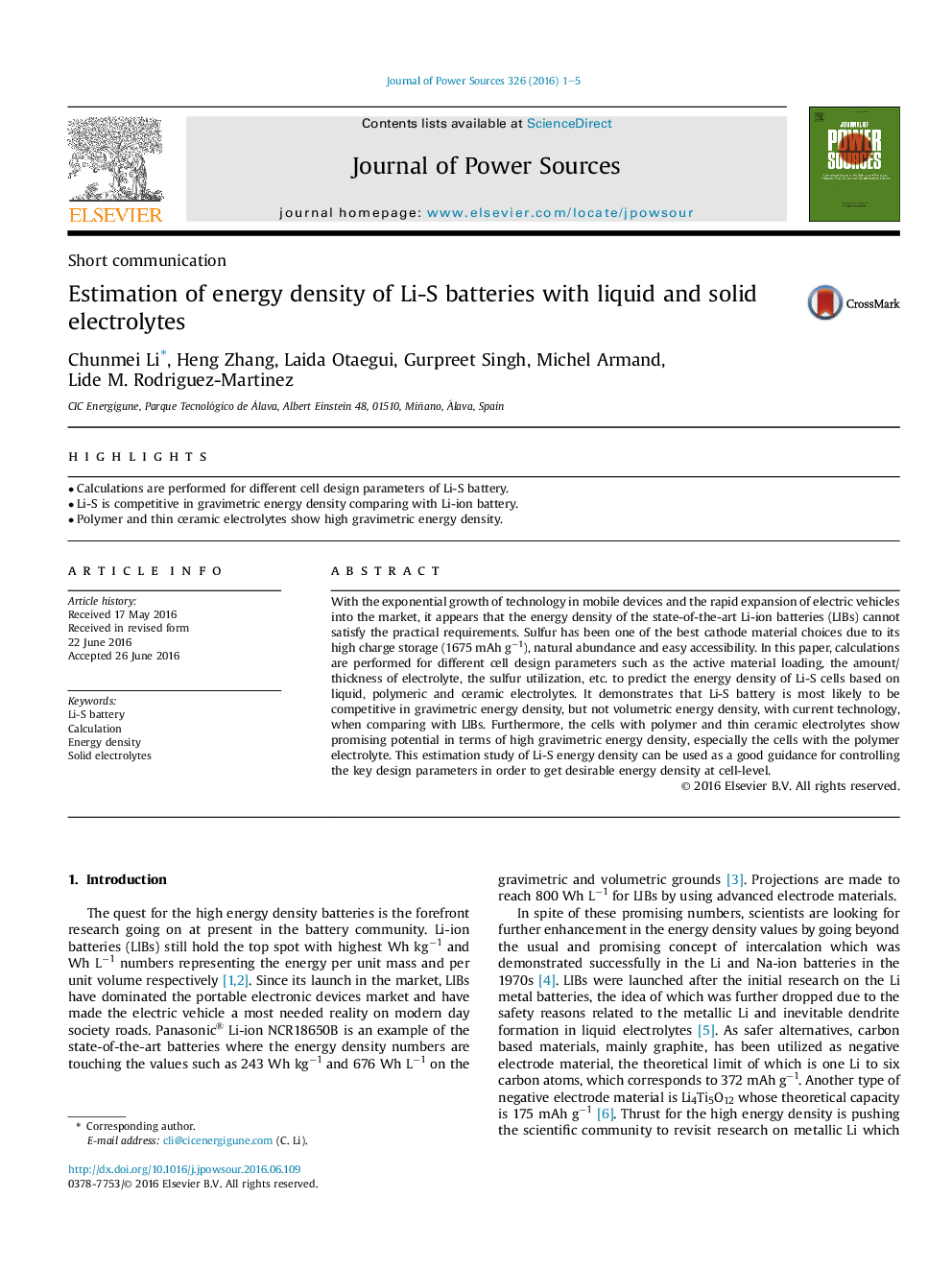| Article ID | Journal | Published Year | Pages | File Type |
|---|---|---|---|---|
| 7727362 | Journal of Power Sources | 2016 | 5 Pages |
Abstract
With the exponential growth of technology in mobile devices and the rapid expansion of electric vehicles into the market, it appears that the energy density of the state-of-the-art Li-ion batteries (LIBs) cannot satisfy the practical requirements. Sulfur has been one of the best cathode material choices due to its high charge storage (1675 mAh gâ1), natural abundance and easy accessibility. In this paper, calculations are performed for different cell design parameters such as the active material loading, the amount/thickness of electrolyte, the sulfur utilization, etc. to predict the energy density of Li-S cells based on liquid, polymeric and ceramic electrolytes. It demonstrates that Li-S battery is most likely to be competitive in gravimetric energy density, but not volumetric energy density, with current technology, when comparing with LIBs. Furthermore, the cells with polymer and thin ceramic electrolytes show promising potential in terms of high gravimetric energy density, especially the cells with the polymer electrolyte. This estimation study of Li-S energy density can be used as a good guidance for controlling the key design parameters in order to get desirable energy density at cell-level.
Related Topics
Physical Sciences and Engineering
Chemistry
Electrochemistry
Authors
Chunmei Li, Heng Zhang, Laida Otaegui, Gurpreet Singh, Michel Armand, Lide M. Rodriguez-Martinez,
